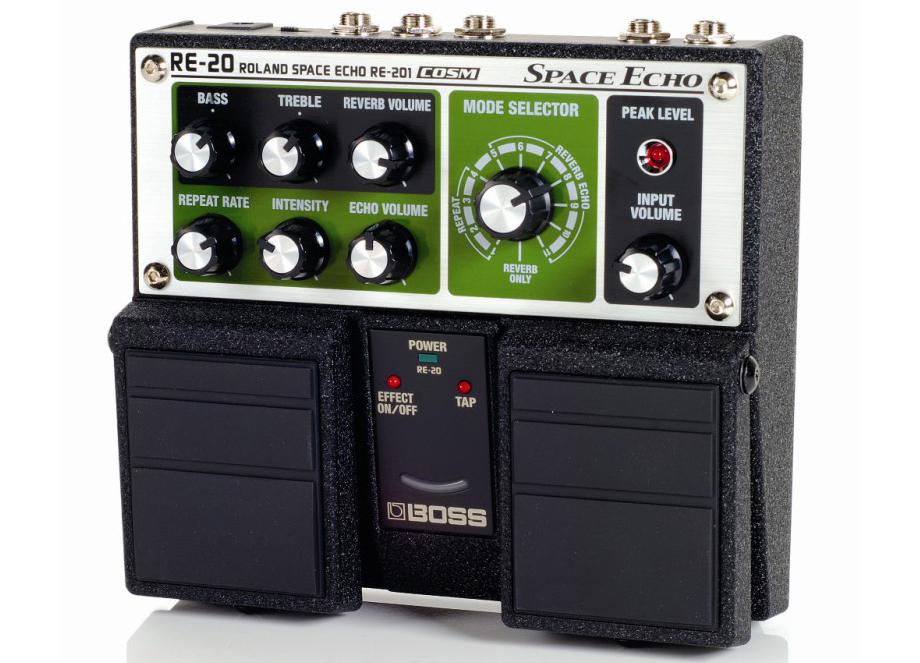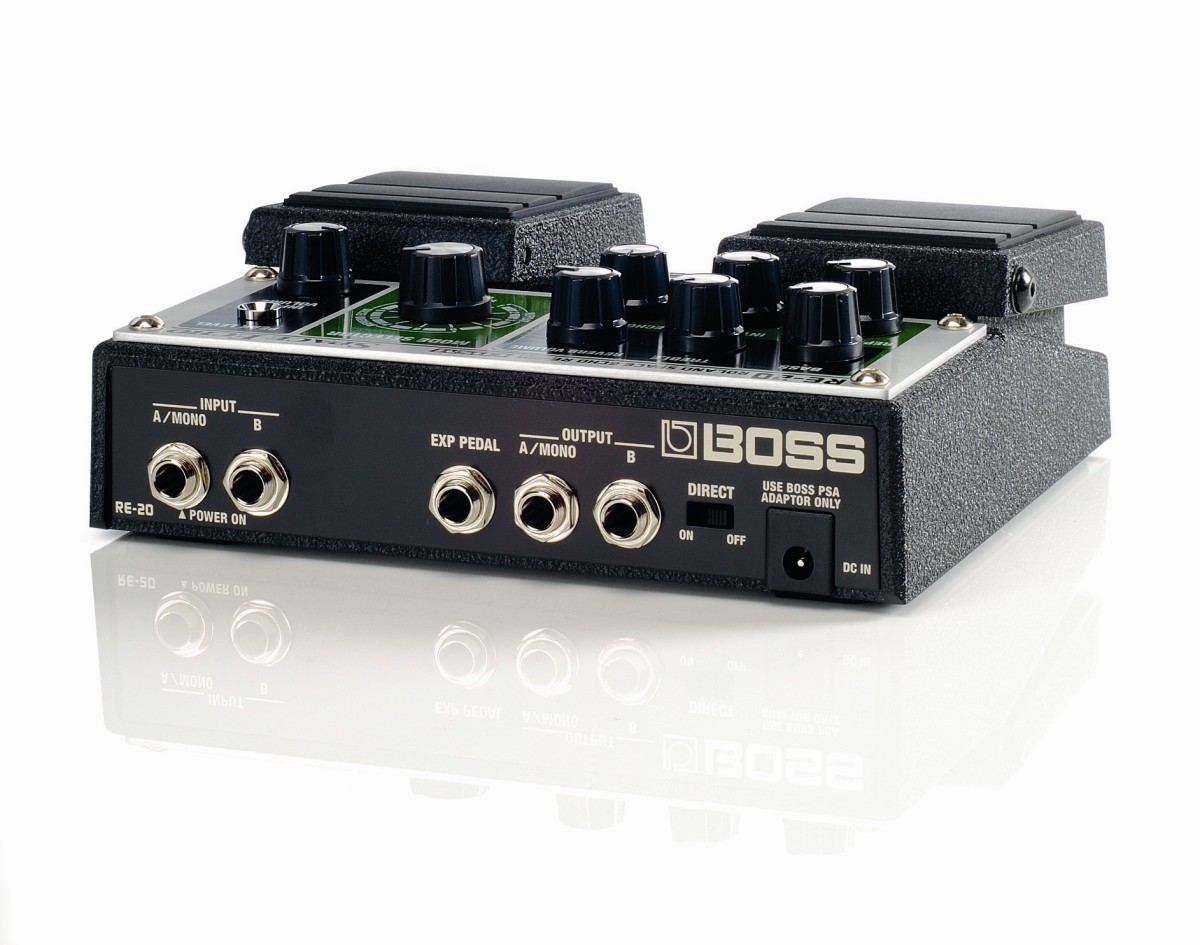MusicRadar Verdict
Boss has created an authentic, tough and portable alternative to the ageing Space Echo.
Pros
- +
Good build quality. Looks sharp. Sounds authentic.
Cons
- -
EQ disabled in reverb only mode. No input level meter.
MusicRadar's got your back


With demand still high for second-hand tape-based Space Echos, it was only a matter of time before Roland's own FX division, Boss, got around to remaking their classic for the noughties. Many producers will testify to this day that there's a certain mojo in the sound of the original Space Echo units that has not yet been matched.
First impressions of the RE-20 are positive. Straight out of the box it feels sturdy and has a reassuring weight (thankfully a lot lighter than the originals!). The pedal's main body is made from tough metal and covered with a textured granite-effect finish, which should stand up well to prolonged stage use and abuse. The dual pedals are made from the same tough material and covered in thick rubber similar to other Boss guitar stomp boxes; it doesn't feel like any corners have been cut on the build-quality front.
The interface may be simple but there are also a number of clever and stylish design cues that hark back to the original RE-201 and instantly transport the user back in time to 1974 (when the 201 was launched). These include the green colour used on the control panel, the peak level indicator and the mode selector dial.
One other feature that seems gimmicky at first but is actually very useful is the red tape speed indicator. It's great to be able to tell at a glance how fast the repeats are before you play in a dark environment (and the light is reminiscent of the one on the front of Knight Rider's KITT!)
All the controls are nicely spaced out and have a reassuring feel; there are eight dials in total. The top row includes the EQ controls and reverb volume. The bottom row includes repeat rate, intensity and echo volume controls.
To the right of these is the familiar mode selector where the type of repeats is selected, and this is also where you select just the echo, the spring reverb emulation, or echo and reverb together. To the right of this is the input volume control that can be driven harder to saturate the virtual tape. Underneath are the two controls for the pedals.
Plugging it in
The left pedal toggles the effect on/off and the right pedal is a tap tempo control for easily tapping in the speed of the repeats with your foot. Further to this, the tap tempo pedal can also access what Boss calls the 'twist' function where the intensity rate and repeat rate are simultaneously increased to create distorted sonic mayhem.
So how does it sound? In a word: 'authentic'. We'd say that Boss has nailed the character of the original RE-201 both on the echo and spring reverb fronts.
The wow and flutter is faithfully recreated and there's an inherent randomness to the sound (such as wobbly repeats and subtle chorusing) which adds to the authenticity and tapey-ness. We were dubious at first but this really is as close as you'll get to an original RE-201.
The sound of the input saturation is also faithful and if you closed your eyes you'd be hard pushed to tell the difference between the RE-20 and the RE-201. The controls react in the same way as on the original, although the original still sounds dirtier and warmer to our ears. Roland's COSM technology has paid dividends in this unit - not least because there's no mechanical noise, chance of motors failing or background hiss, even at high gain levels.
Problems
Now for the drawbacks. First off, having an input level meter would be useful. Also, when using the input level control with low output instruments such as a Rhodes piano, we found that the available gain level was a little on the low side and that the saturation only really came into play with the input volume set almost at maximum.
The biggest problem we found is in 'reverb only' mode. For some reason, the EQ controls become disabled. This is a shame, as we find it's really useful to be able to EQ the reverbed sound. We also found that, in general, the saturation sounds a bit more brittle and harsh compared to the original.
It's also shame that the direct signal on/off switch is on the back, as it's sometimes really handy to have the option to switch modes on the fly. We don't like the fact that the longer delay mode can only be accessed by powering the unit off, either.
Finally, there's no sound-on-sound mode, but the RE-201 didn't have that anyway! But those niggles aside, it's a very impressive piece of gear.
MusicRadar is the number 1 website for music makers of all kinds, be they guitarists, drummers, keyboard players, djs or producers...
GEAR: We help musicians find the best gear with top-ranking gear round-ups and high- quality, authoritative reviews by a wide team of highly experienced experts.
TIPS: We also provide tuition, from bite-sized tips to advanced work-outs and guidance from recognised musicians and stars.
STARS: We talk to musicians and stars about their creative processes, and the nuts and bolts of their gear and technique. We give fans an insight into the actual craft of music making that no other music website can.
With its latest free update, Ableton has finally turned Note into the app I always wanted it to be
Technically capable, but struggle to make your tunes sound musical? 5 simple music theory hacks to make your tracks stand out
"Despite its size, it delivers impressive audio quality and premium functions as well as featuring a good selection of inspired sounds": Roland GO:Piano 88PX review










